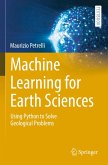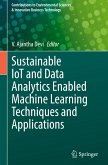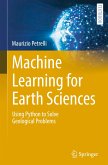There are an emergent machine learning(ML) algorithms to classify land-cover and land-use. In this book we focus on the relatively mature methods (seven methods) support vector (SVM) machines, decision trees (DTs), artificial neural networks, k-nearest neighbours (k-NN), naïve Bayes, Boosting and Random forest (RF).Accurate and timely collection of urban land use and land cover information is crucial for many aspects of urban development and environment protection.Accurate land covers classification is challenging. Improving land cover classification is a hot topic. It is needed for many applications such as land use land cover mapping environmental monitoring, natural resource management, urban planning, and management and change detection. Then a number of ensample methods were studied to combine various classifiers.
Hinweis: Dieser Artikel kann nur an eine deutsche Lieferadresse ausgeliefert werden.
Hinweis: Dieser Artikel kann nur an eine deutsche Lieferadresse ausgeliefert werden.








